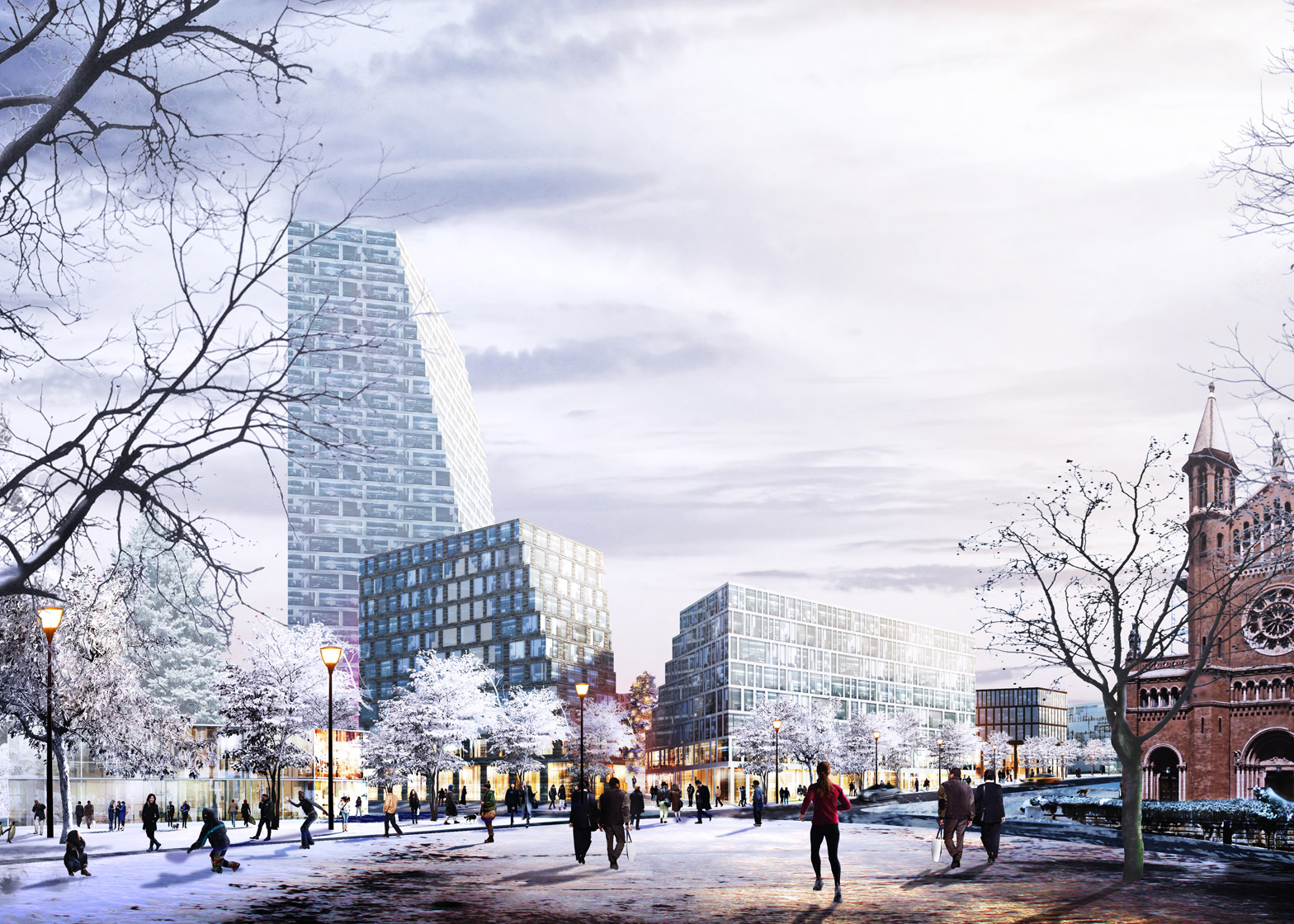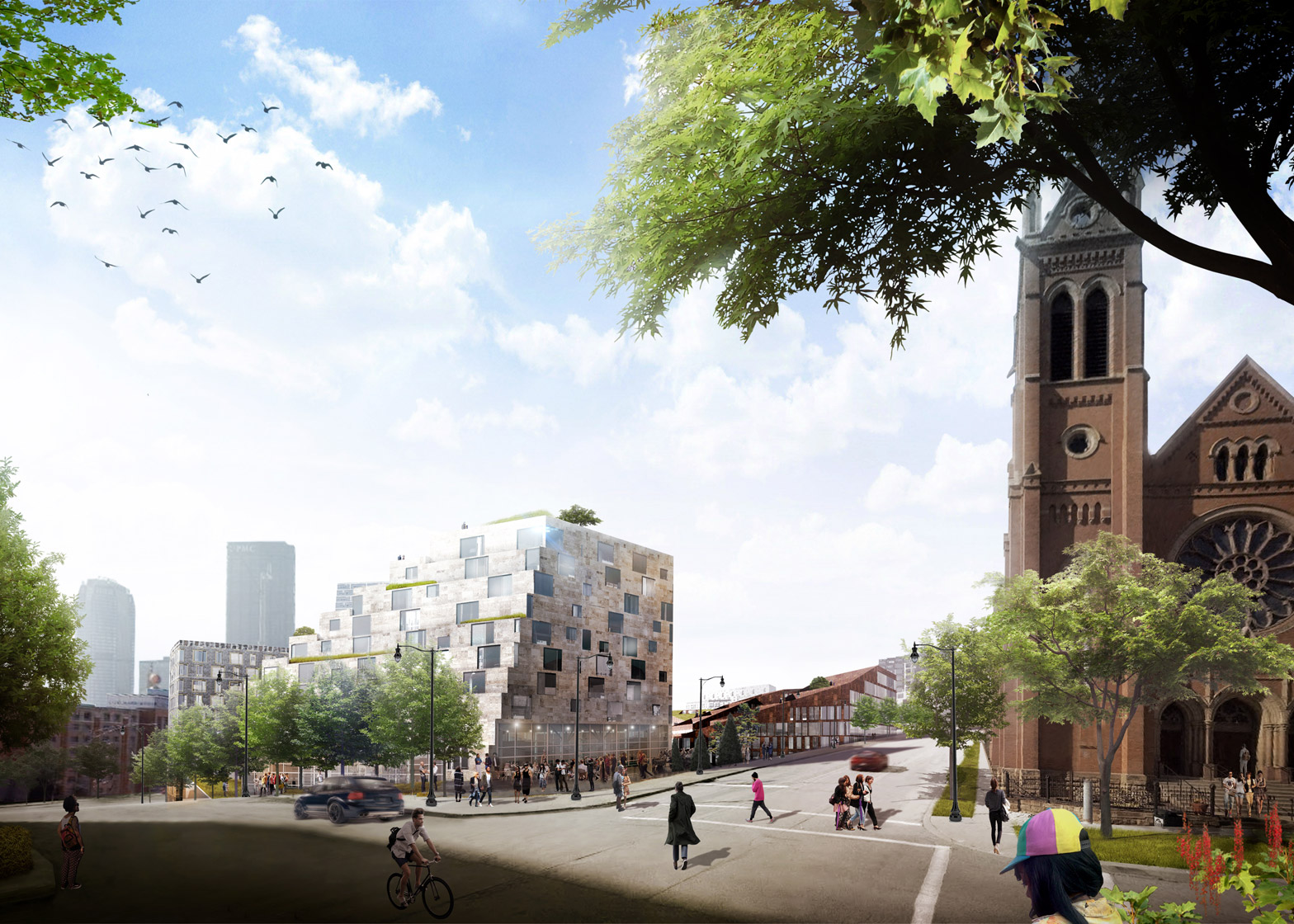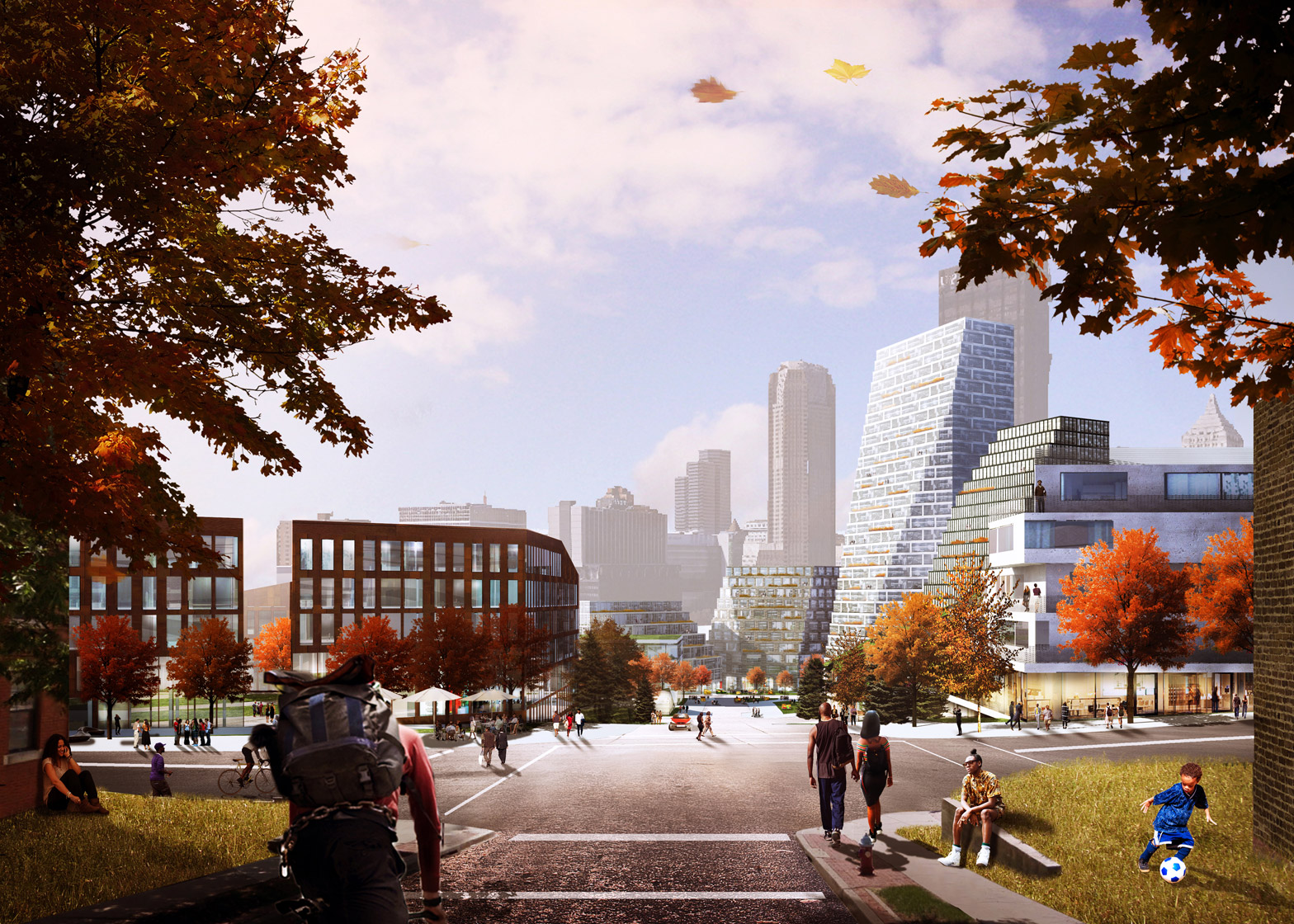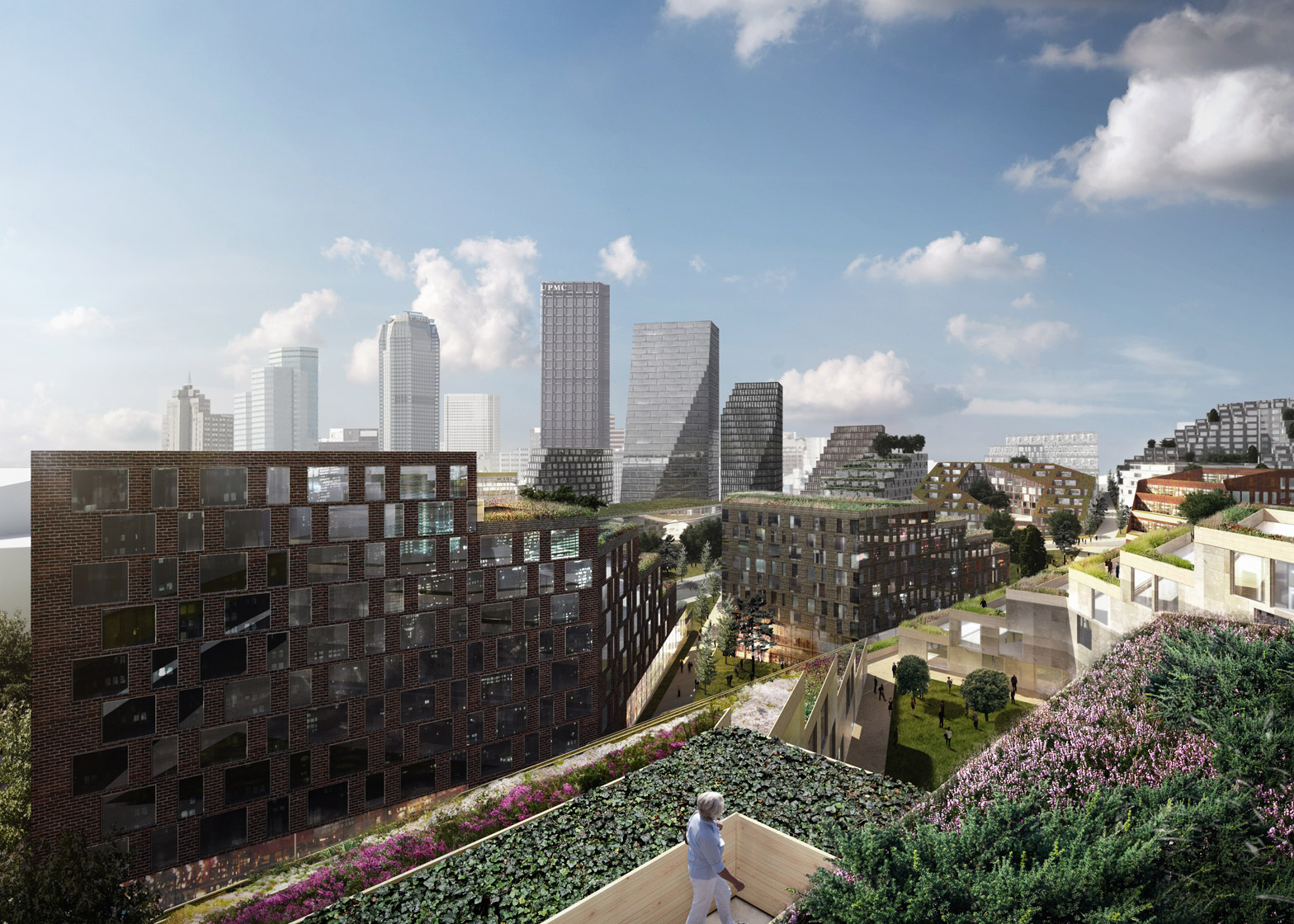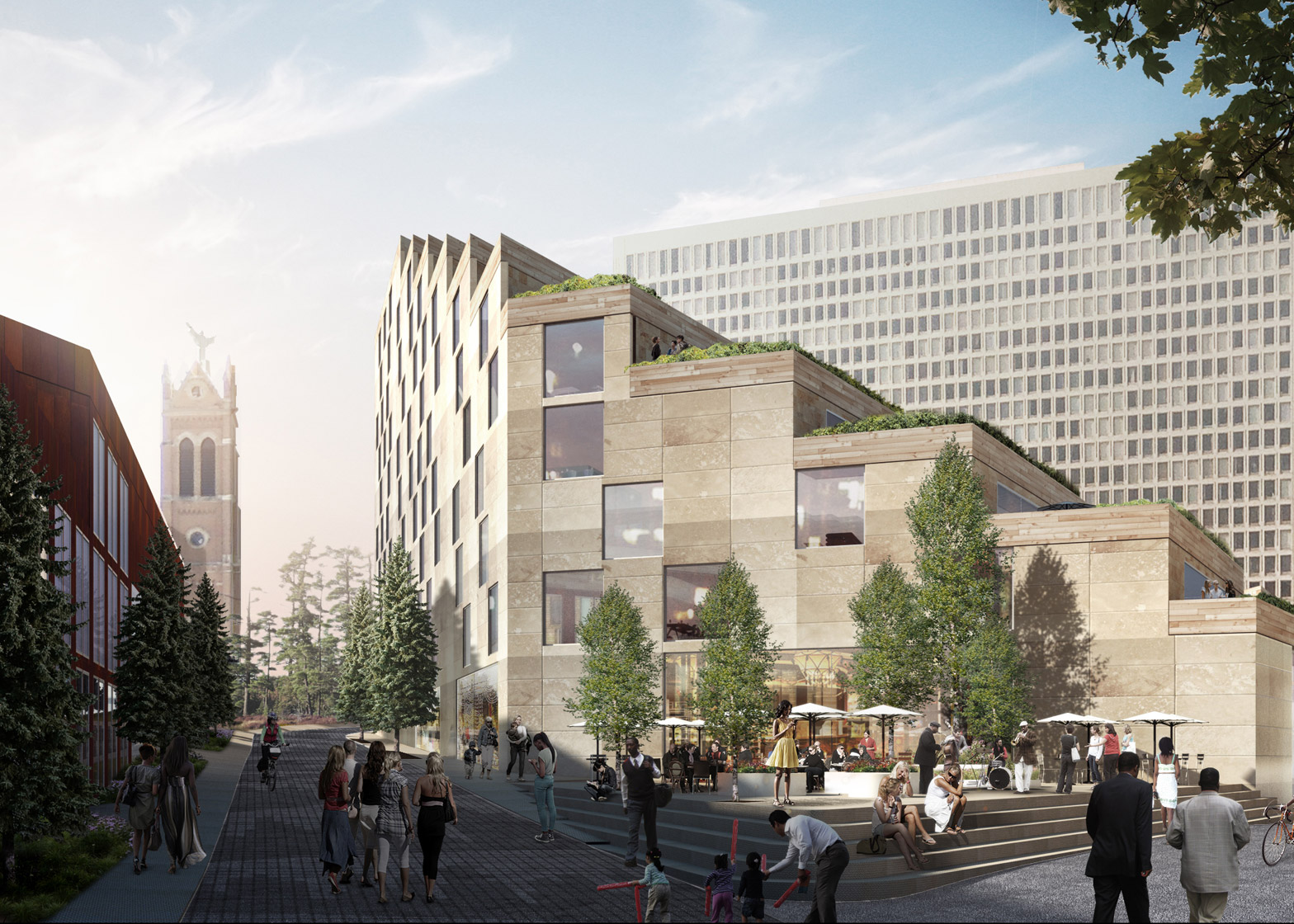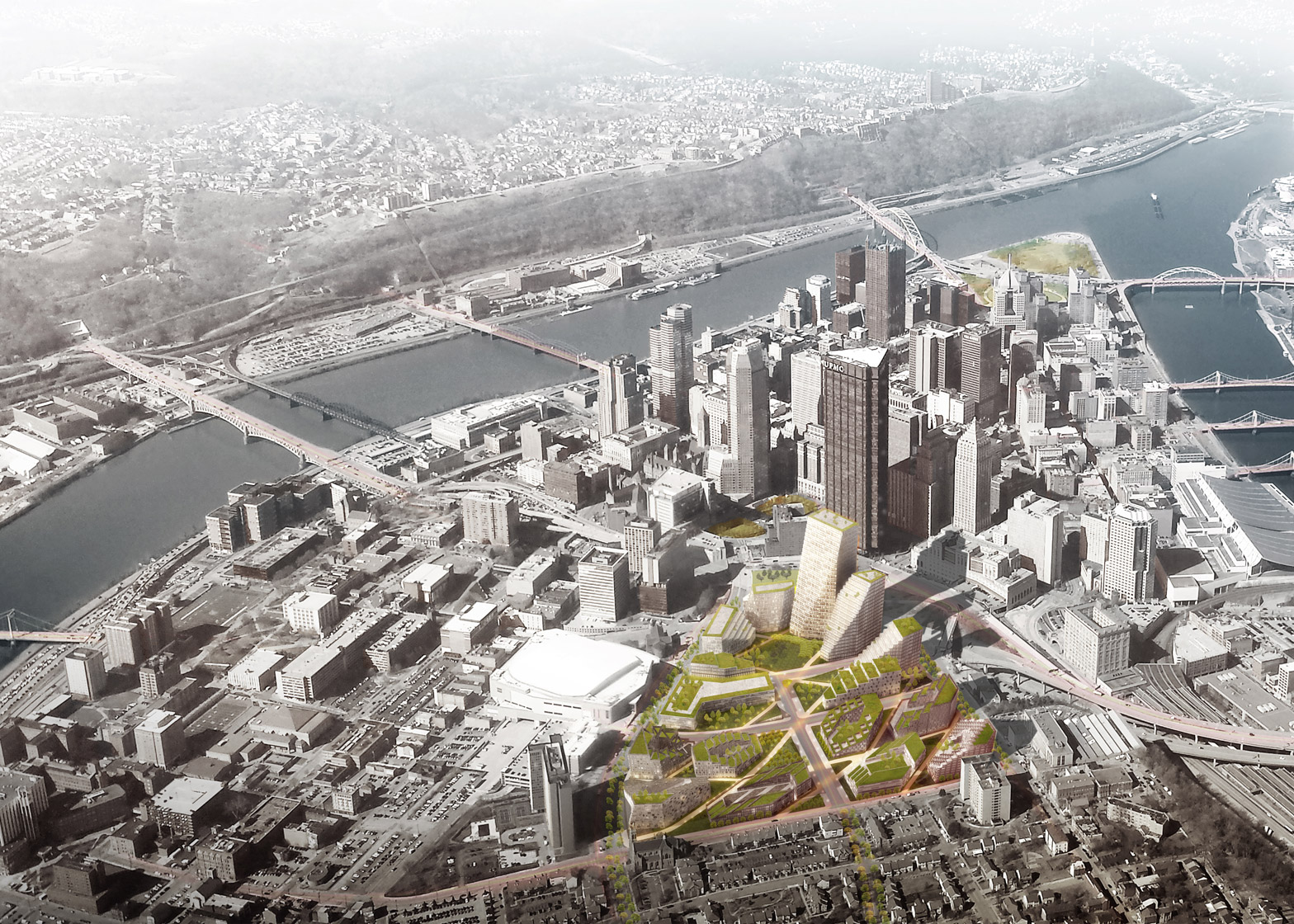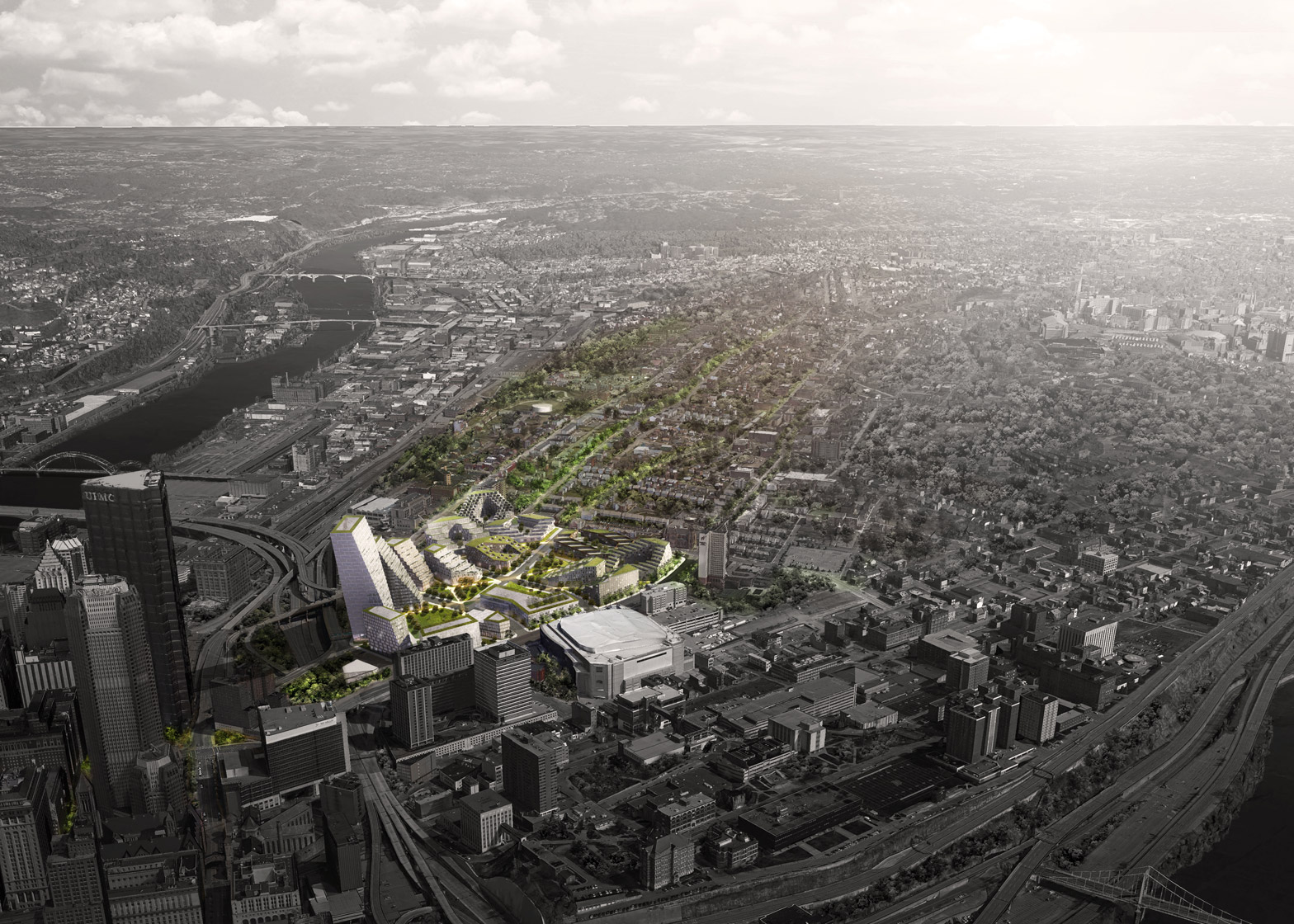Danish architecture studio BIG has revealed its masterplan for Pittsburgh's Lower Hill District, featuring sloped-roof buildings and an extensive network of pathways (+ slideshow).
BIG, the studio founded by Bjarke Ingels, is leading a team commissioned to design the 28 acre (11 hectare) masterplan for the sloping site near the city's downtown area.
The site formerly housed the Civic Arena – home to the Pittsburgh Penguins hockey team – which opened in 1961 and was designed by Mitchell & Ritchey Architects. It was the world's first major sports stadium with a retractable roof.
The arena was demolished in 2012 after the city built a new stadium, the Consol Energy Center, designed by Populous. In 2007, the Penguins gained development rights to the site of the razed stadium.
Called the New Lower Hill Master Plan, BIG's scheme calls for 1.2 million square feet (111,500 square metres) of residential space and 1.25 million square feet (116,100 square metres) of offices, retail and hotels.
BIG is working on the plan with landscape architecture firm West 8, sustainability experts Atelier Ten, local architecture firm La Quatra Bonci Associates and several other consultants.
"BIG, West 8 and Atelier Ten's vision for a new masterplan in Pittsburgh covers 28 acres, providing accessibility across Pittsburgh's unique topography and creating a vibrant new open space for the city's residents to enjoy," said BIG in a statement.
McCormack Baron Salazar and Pittsburgh Arena Real Estate Redevelopment (PAR) are backing the $500 million (£328 million) project. PAR is an affiliate of the Pittsburgh Penguins.
BIG's vision calls for a "meandering public realm" that better connects the Hill District to the city's downtown area.
"The resulting urban fabric combines a green network of effortless circulation with a quirky character reminiscent of a historical downtown," said Bjarke Ingels.
"Topography and accessibility merge to create a unique new part of Pittsburgh," he added.
The proposal features a network of paths and triangular plazas set among buildings with varied functions.
"The masterplan for the Lower Hill District is created by supplementing the existing street grid with a new network of parks and paths shaped to optimise the sloping hill side for human accessibility for all generations," said Ingels.
"The paths are turned and twisted to always find a gentle sloping path leading pedestrians and bicyclists comfortably up and down the hillside," he said.
The buildings will have sloped roofs and generous terraces and will offer views of the city.
For the public realm, West 8 has proposed granite outcroppings that take their cue from the region's mountainous landscape.
Streets and walkways are designed to foster an active public life and the efficient flow of pedestrians, bikes, cars and public transportation.
"The site, with its slopes and views, is perfectly suited for bringing an experience of the native landscape to this urban condition," said Jamie Maslyn, a partner at West 8.
"The design creates a new open space identity but more importantly gives neighbours and visitors the sensations of nature in the heart of the city," he said.
Atelier Ten has developed comprehensive sustainable goals that consider district-scaled heating and cooling opportunities and utilising rainwater to irrigate public spaces.
City officials held a groundbreaking ceremony for the redevelopment project last March. Road and utility construction is reportedly underway.
"BIG's masterplan seeks to become a catalyst for future investment into the Hill District, moving beyond the standard sustainability solutions and reversing a tendency to vacate, and instead to refocus and reinvest into building a strong community," said Kai-Uwe Bergmann, a partner at BIG.
The firm, which opened its New York office in 2010, has a number of other large projects in the US, including the Via 57 "courtscraper" and Two World Trade Center skyscraper in Manhattan and two twisting apartment blocks at The Grove in Miami.

